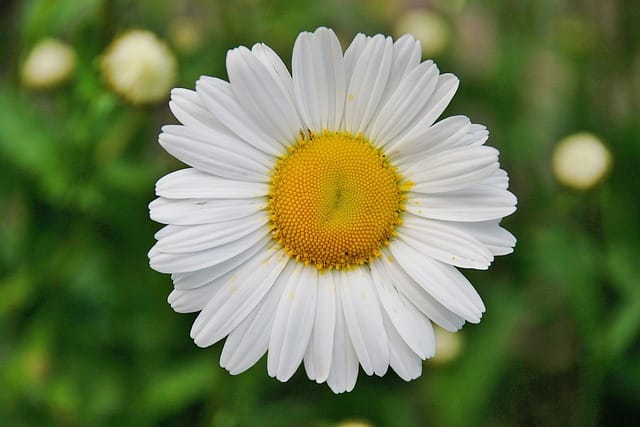How to grow Oxeye Daisies
Welcome to the complete guide on how to grow Oxeye Daisies (Leucanthemum vulgare) in your garden

In this article:
- Introduction
- Overview of Oxeye Daisies
- Choosing the Right Location
- Soil Requirements
- Planting Oxeye Daisies
- Watering and Fertilization
- Mulching and Weed Control
- Pruning and Deadheading
- Pests and Diseases
- Propagation Methods
- Division and Transplanting
- Winter Care
- Frequently Asked Questions
- Conclusion
Introduction
Welcome to the complete guide on how to grow Oxeye Daisies (Leucanthemum vulgare) in your garden. This article will provide you with step-by-step instructions and valuable tips to ensure the successful cultivation of these beautiful flowers.
Overview of Oxeye Daisies
Before we dive into the growing process, let's explore some essential information about Oxeye Daisies. These perennial flowers are native to Europe and North Africa, and they belong to the Asteraceae family. Oxeye Daisies are known for their distinctive white petals with yellow centers and their ability to attract butterflies and bees.
Choosing the Right Location
Oxeye Daisies thrive in full sun, so it's crucial to choose a location that receives at least six hours of direct sunlight per day. They can tolerate partial shade but may not bloom as profusely. Additionally, select a spot that offers well-drained soil to avoid waterlogging.
Soil Requirements
Oxeye Daisies prefer moderately fertile soil with a pH level between 6.0 and 7.5. Ensure the soil is loamy, well-draining, and rich in organic matter. If your soil is heavy clay or sandy, incorporating compost or well-rotted manure can improve its texture and fertility.
Planting Oxeye Daisies
The best time to plant Oxeye Daisies is in the early spring or fall when the soil is workable. Start by preparing the planting area by removing any weeds or grass. Dig a hole that is twice the width of the plant's root ball and about the same depth. Place the plant in the hole, backfill with soil, and gently firm it down. Space the plants about one foot apart to allow for adequate airflow.
Watering and Fertilization
While Oxeye Daisies are drought-tolerant once established, they still require regular watering during their initial growth period. Water them deeply every week, ensuring the soil remains consistently moist but not waterlogged. Once the plants are established, reduce watering frequency. Avoid over-fertilizing as it can lead to leggy growth – a well-balanced, slow-release fertilizer in the spring should be sufficient.
Mulching and Weed Control
Apply a layer of organic mulch, such as wood chips or straw, around the plants to help retain moisture, suppress weeds, and regulate soil temperature. Keep in mind to maintain some space around the plant's base to prevent excessive moisture retention, as it may lead to rotting.
Pruning and Deadheading
Regular deadheading of spent flowers is essential to encourage continuous blooming throughout the growing season. Also, removing wilted blooms prevents the plant from self-seeding and spreading excessively. After flowering has finished, cut back the plant to about two inches above the ground to promote new growth.
Pests and Diseases
Oxeye Daisies are generally resistant to pests and diseases. However, they can occasionally suffer from aphids, slugs, and snails. Monitor your plants regularly and take appropriate measures, such as using organic insecticides or employing physical barriers, to control pests if necessary.
Propagation Methods
Oxeye Daisies can be propagated through seeds or division. To grow from seeds, collect them after the blooming period, plant them in containers filled with well-draining soil, and keep them indoors until they germinate. To divide the plants, carefully dig up the clumps in early spring or fall, separate them into smaller sections with roots, and replant them in desired locations.
Division and Transplanting
Division is an effective method to rejuvenate overgrown or crowded Oxeye Daisies. It's best to perform this procedure in early spring or fall when the weather is cool. Dig up the clump, divide it into smaller sections, ensure each division has roots attached, and transplant them immediately into prepared holes.
Winter Care
Oxeye Daisies are hardy perennials that can survive cold climates. However, providing some winter protection can benefit the plant's overall health. Apply a layer of mulch around the base of the plant in late fall to insulate the soil against temperature fluctuations. Remove the mulch in early spring to allow new growth to emerge.
Frequently Asked Questions
Here are answers to some common questions about growing Oxeye Daisies:
- Q: How tall do Oxeye Daisies grow?
- Q: Can Oxeye Daisies be grown in containers?
A: Oxeye Daisies can grow up to 2 to 3 feet in height.
A: While Oxeye Daisies prefer being planted directly in the ground, they can be grown in large containers as long as they receive ample sunlight and proper care.
Conclusion
Now that you have all the information you need, it's time to put it into action and start growing Oxeye Daisies in your own garden. With the right location, proper soil preparation, regular maintenance, and appropriate care, you'll be rewarded with beautiful blooms that will add charm and color to your outdoor space.
